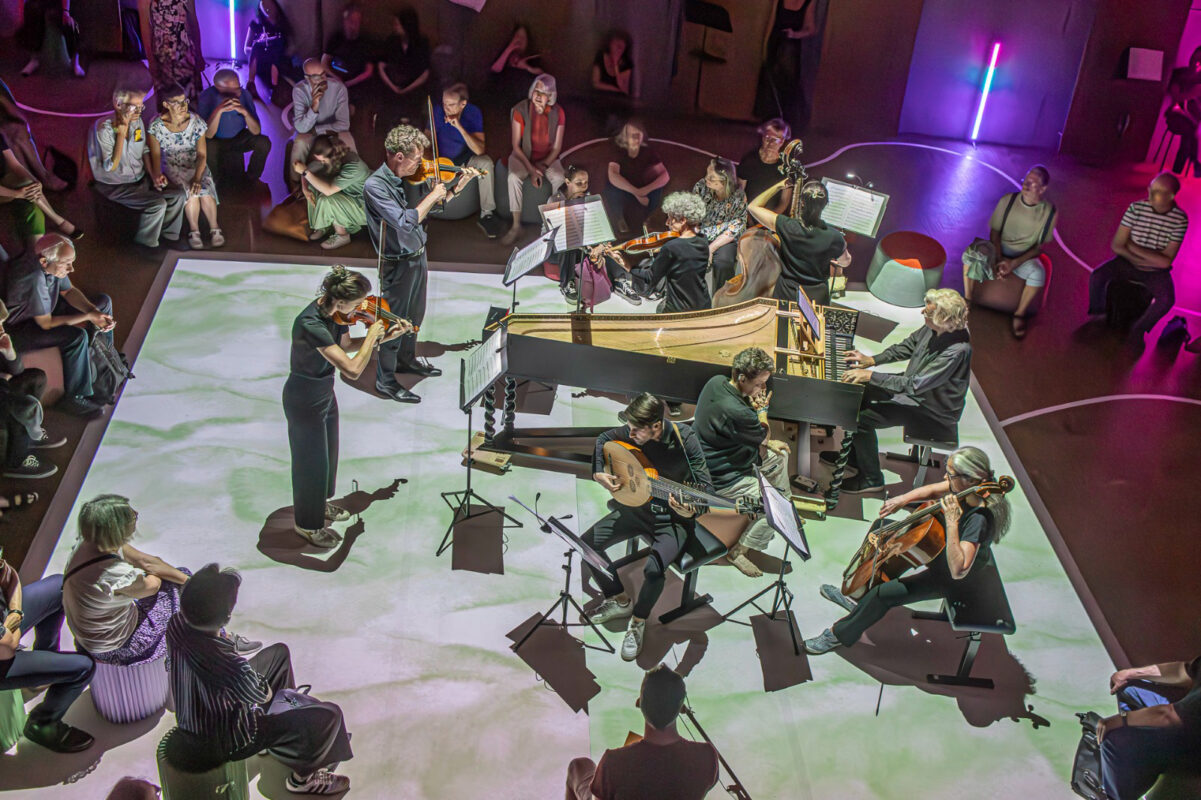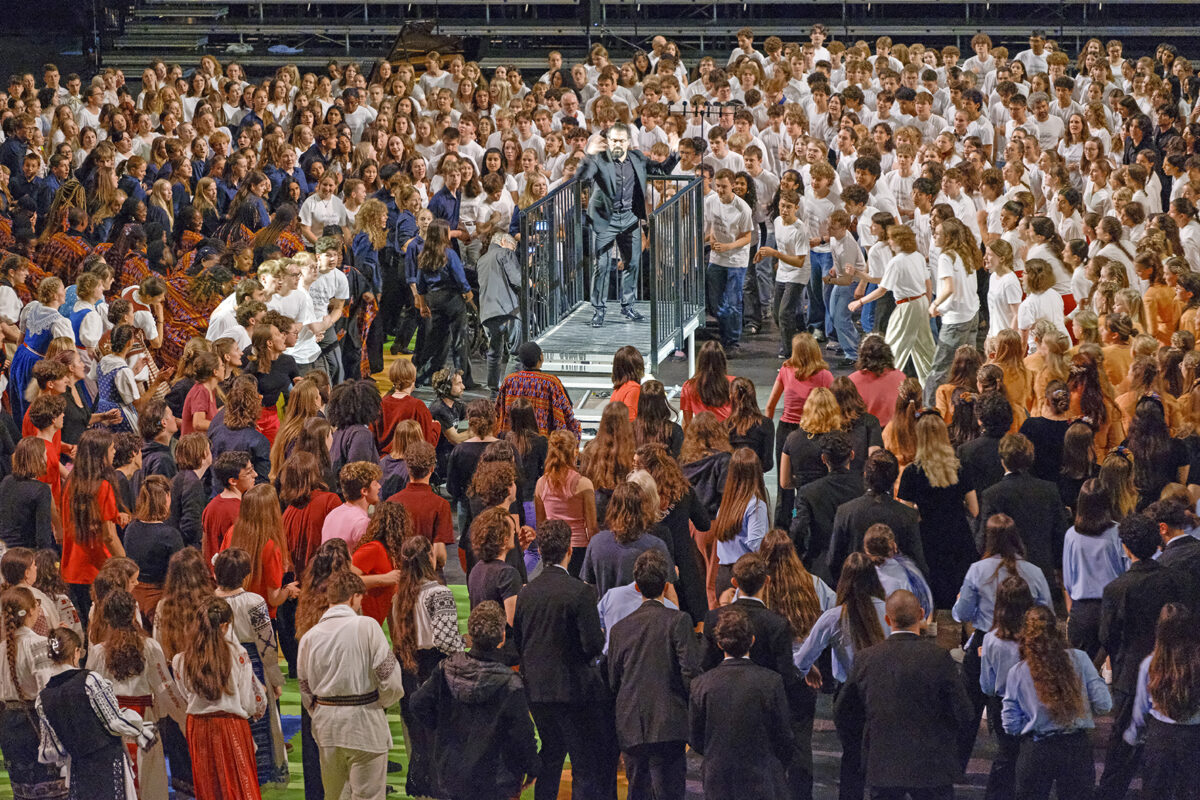Akiko's piano
"Music for Peace" is an initiative of the Hiroshima Symphony Orchestra, which aims to move the world with the idea of peace and is supported by Martha Argerich.
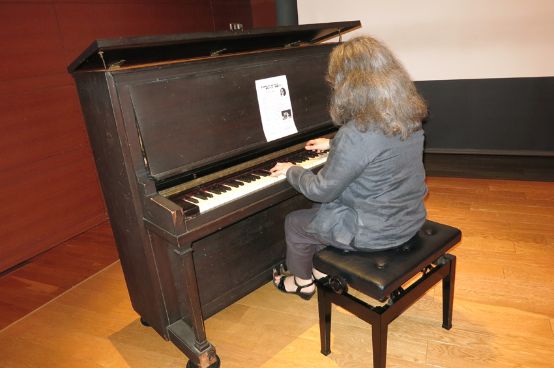
Hiroshima, August 6, 8:15 a.m.: The peace bell is struck seven times. It is the moment in 1945 when an American bomber released the atomic bomb ten kilometers above the city. Tens of thousands died within seconds, and by the end of the year the number of victims had risen to around one hundred and forty thousand as a result of the radioactivity. Every year, the chimes open the memorial ceremony, which is attended by the survivors and their families, high-ranking officials, a large part of the diplomatic corps from Tokyo and thousands of ordinary citizens at ground zero of the explosion, today's Peace Park. A minute's silence is followed by speeches from the Mayor of Hiroshima and the Prime Minister, a flock of doves flies up and two children read out a pledge of peace.
-
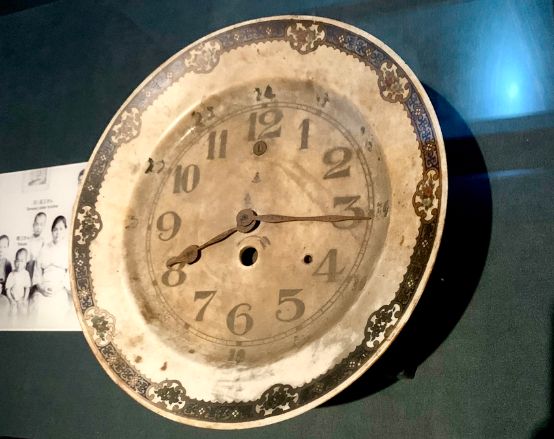
An exhibit at the Hiroshima Peace and Remembrance Museum: the kitchen clock stopped at the moment the bomb exploded. Photo: Max Nyffeler
The short and dignified ceremony is a highly visible part of a carefully cultivated culture of remembrance in the city, which today once again has over one million inhabitants. In addition to various memorials in the park, this includes the ruins of the former Chamber of Commerce and Industry, known worldwide as the "atomic bomb dome", and above all the Peace and Remembrance Museum. It documents the death and mass suffering of the victims in a way that is as factual as it is harrowing and demonstrates the destructive potential of the bomb in an exemplary educational section. It is terrifying to think that something like this could happen again anywhere in the world today.
-
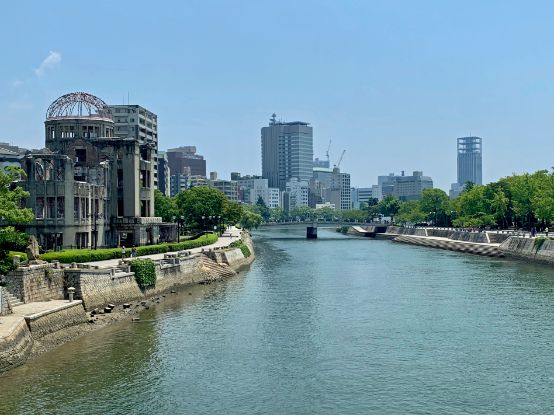
Point Zero and today's Hiroshima, on the left the monument of the "atomic bomb dome". Photo: Max Nyffeler
"Music for Peace" as an international exchange program
Since 2015, these traditional activities have been complemented by the "Music for Peace" initiative, which focuses on the Hiroshima Symphony Orchestra stands for. It has set itself the task of spreading the idea of peace, which is held in high esteem in this city, throughout the world. Among its supporters, Martha Argerich is at the forefront with the honorary title of peace ambassador for the orchestra. The initiator and driving force is Shoji Sato, whose main job is working for a Tokyo artists' agency, and the symphony orchestra acts as the artistic sponsor. With thematically oriented concert programs and using the global connections in today's music business, it forms the hub of a long-term, international exchange program that not only extends to reciprocal orchestra visits and soloist activities, but also involves orchestra musicians individually or in groups, depending on the project.
-
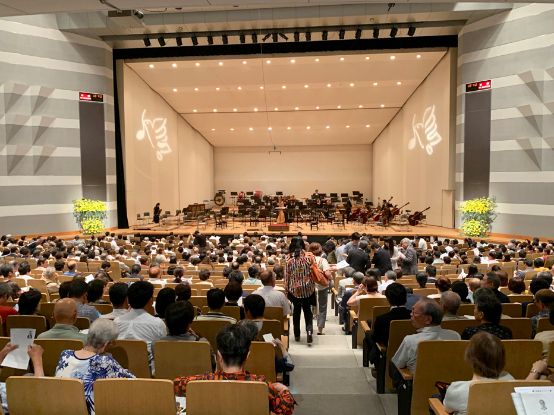
The concert hall in Hiroshima. Photo: Max Nyffeler
The "transplantation" of orchestral musicians is unusual and points to one of the basic ideas behind the initiative. Beyond the legitimate endeavor to better position the orchestra on the international market, the aim is to broaden the background experience of both the individual musicians and the orchestra as a whole and to contribute to understanding across continents, language barriers and cultural peculiarities through human encounters. Orchestral education and peace education complement each other. "'Music for Peace' wants to make people aware of the idea of disarmament," says Sato. It is not surprising that our European classical music serves as a medium for such Japanese peace signals. It has a high status in the Far East, the audience is enthusiastic and, as can be observed in Japan at least, consistently well informed. It is also growing continuously, not least due to the influence of the media, without which nothing would work today.
A world premiere by Toshio Hosokawa
On the eve of this year's memorial day, the Hiroshima Orchestra, under the direction of its permanent guest conductor Christian Arming, gave a concert with a new work by Toshio Hosokawa, the first cello concerto by Dmitri Shostakovich and the first symphony by Gustav Mahler. Hosokawa was born in Hiroshima and is currently the orchestra's composer-in-residence. He learned Western compositional techniques from Klaus Huber in Freiburg, but his musical language is audibly rooted in Asian musical sensibilities. Here, the lively line as a principle of form and vehicle of expression takes the place of a harmonically structured order; the harmonic space is replaced by the spatiality of the gesture, which - analogous to the brushstroke in calligraphy resulting from the movement of the body - begins and ends in nothingness, i.e. in silence.
Hosokawa refers to this parallel in the context of the recently premiered composition Song V there. It is a short, very concentrated concerto for cello and string orchestra with percussion and harp. Characteristic East Asian symbolism is also evident in the formal structure: according to Hosokawa, the solo part represents the voice of man, while the orchestra stands for inner and outer nature. The melodic line is enlarged to gigantic proportions, it spans the entire tonal space, frays and tangles and grows into expressive sound processes - a permanently high-voltage stream of energy that is brought to life with gripping intensity by the English cellist Steven Isserlis. The colorful orchestra provides the appropriate resonance chamber.
The Hiroshima Symphony Orchestra is one of Japan's top orchestras, it is responsive and cultivates a sparklingly transparent sound. The brilliant wind section and the flexible string sound are striking. It was able to make full use of its qualities in the concluding Mahler symphony, where it conjured up something of a Viennese atmosphere on the distant Pacific under Arming's inspiring direction with its collective rubato playing, the little swerves and glissandi, especially in the melancholy slow movement.
Martha Argerich plays contemporary music
-
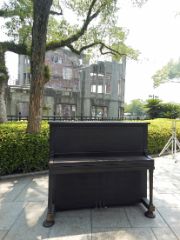
Akiko's piano in front of the "atomic bomb dome". Photo: by courtesy of Hope Project, Hiroshima
The orchestra's initiative has already forged numerous links with Europe and Canada. There is a particularly close relationship with Sinfonia Varsovia; both were founded after the war in a city that had been razed to the ground, and to mark the centenary of diplomatic relations between Japan and Poland, the two orchestras recently performed in Warsaw in a mixed formation, playing Beethoven's Ninth together and Martha Argerich performed Chopin. Krzysztof Penderecki was already a guest in Hiroshima in June. In addition to Beethoven, he conducted his 2009 premiere in Krakow under Valery Gergiev. Prelude for Peace and his second violin concerto; two members of the Danish Radio Symphony Orchestra took part as external orchestral musicians.
But the really big fireworks will take place next August in Hiroshima, when the orchestra will once again perform the Ninth with twenty guest musicians from Poland, Denmark, France, Germany and the USA and choristers from Hanover, Hiroshima's twin city. And the surprise of the evening: Martha Argerich, otherwise not exactly known as a champion of contemporary music, will premiere a new piano concerto. It is called Akiko's PianoThe composer is Dai Fujikura. He is no stranger to Switzerland; in 2004 Pierre Boulez invited him to the first Festival Academy in Lucerne and a year later conducted his orchestral piece Stream State.
The piano concerto ends with a cadenza that evaporates into a triple piano at the end. Martha Argerich will switch from the grand piano to Akiko's piano. Akiko was a nineteen-year-old girl from Hiroshima who died from nuclear radiation the day after the explosion. Her piano, a high-quality instrument made by the American manufacturer Baldwin, survived the apocalypse, was restored and will now be played in public for the first time in this concert, initially in Hiroshima and then in Europe; according to reports, contact is also being made with Lucerne.
The pictures of the dead, the tattered clothes and the everyday objects melted into lumps in the Hiroshima Peace Museum are silent witnesses to the city's downfall. Akiko's piano tells of the horror, but also how to overcome it, in sound.
-
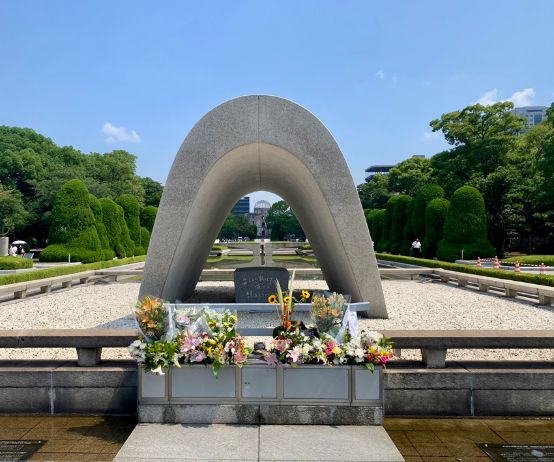
The Hiroshima Peace and Memorial Park. Photo: Max Nyffeler






